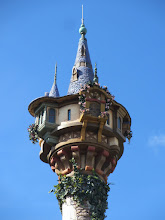Latin America, closer to our hearts
 (Map available at Yahoo Images)
(Map available at Yahoo Images)Latin America means home for us, but it is a definition that still many of us don’t understand, since sometimes we think about it just as south America, but it means a connection with the roots of our languages so it goes up to Mexico and even includes the province of Quebec in Panamá.
But as a closer place for us there was a presentation, of Juliana Chacón, Mónica Ordoñes and Jaime Andrés Cardona, that focused on three main aspects, politics, economy and culture, which we are going to explain here.
So starting with politics, they highlighted in the presentation that there is not coordination between Latin American countries towards a common political style, what makes it hard for the region to take common decisions looking for a common goal and does not allow coordination in the activities they undertake together.
That also, has made possible to identify smaller groups taking similar directions, and at the moment those are center-left, radical left and center-right.
The center-left is related to social democracy and seeks to have a mixed economy and a regulation within the market in order to guarantee an egalitarian system. Right now, the most important country with this tendency is Brazil with Lula Da Silva, Chile with Michelle Bachelet and Paraguay with Lugo, among others.
The radical left is based on a total equalitarian base and takes as guide the theorist from Marx, Lenin, Stalin and Trotsky. It is against capitalism and it uses a populist rhetoric.
According to the presentation, it looks for an immediate well-being but doesn’t think in the long term, gets in debts that are hard to pay and wants to give total employment without thinking about productivity.
And here it goes against the “imperialism” of the States in Latin America.
The most recognized left government is the one in Venezuela with Chavez, and then we consider its friends Cuba with Castro, Bolivia with Morales, Ecuador with Correa and Nicaragua with Ortega.
And finally, the center-right is the one in favor of the free market, promoting Foreign Direct Investment, reducing taxes and like that reducing the public costs.
The main countries with this tendency are Colombia with Uribe, Perú with García and México with Calderón.
Nonetheless, this perspectives and view doesn’t seem to be considered stable for the following years since the next year there are elections in many countries of the region and the outcomes are still unsure for some of them.
The economy has as main region integrations ALCA, ALADI, CAN, MCCA, MERCOSUR and AEC.
The ALCA is an initiative to have a Free trade Area for the whole Americas, but right now it is finding a huge opposition from countries as Brazil, Argentina and Venezuela who propones the ALBA as an ALCA (Alternativa Bolivariana par alas Americas) opposite.
ALADI is an important institution in the region, it doesn’t subscribe commercial agrrements but it seeks to coordinate the intentions to achieve an economic integration and promotes the subscription of FTA’s and others.
The CAN, MERCOSUR, CACM and AEC are regional economic integrations that are aiming somehow an economic union. Despite of this the efforts are hard because of some differences among the members. From those the closest one is CACM, which is a common market already.
And finally, concerning cultural diversity it was highlighted that there are many racial groups thanks to the mixed of cultures and people, the indigenous habitants and then the European migrants and the African they brought, and unlike in other European colonization this time there was a mixed of races creating like that the mestizos (European and indigenous) and mulattos (African and the others).
That has made Latin America a culture full of diversity and a colorful continent.
With languages Spanish is the most influential, but there are other languages as Portuguese and French.
Latin America is definitely a beautiful continent full of places and cultures to explore.
Special Note:
This Blog was made and design by María Camila Restrepo Zuluaga, Julia María Rodas Jaramillo and María Natalia Suárez Vallejo.
References:
Cardona, J.A. & Chacón, J. & Ordoñez, M. & Vargas, N. 2009. Presentation "Latin America: A gaze around the region" part of the subject Organizations and Cultures at the University EAFIT

No hay comentarios:
Publicar un comentario